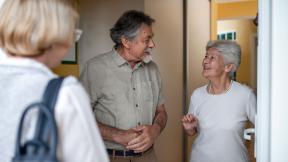Neighbourhood working in action
Neighbourhood working describes a way of working where neighbourhoods and statutory services work together to improve the health and wellbeing of their population.
This section brings together a selection of case studies that build a picture of the current landscape of neighbourhood working in England. Deliberately diverse, the 14 examples cover a range of different communities, geographies and ways of working. All are united by the commitment of those involved to transforming lives within local neighbourhoods and communities, through taking a different approach to improving health and wellbeing.
The case studies include system-wide approaches, reflect the potentially powerful role of primary care and general practice, show communities at the heart of change, and demonstrate the role of voluntary and community sector (VCSE) organisations.
To support those on a similar journey we have highlighted some of the key areas of focus and outcomes and included contacts for each example. If you can, please go to see these neighbourhood partnerships in action. The results are truly inspiring.
Browse the map to find out more and scroll down for further insights on neighbourhood working.
Case studies

















